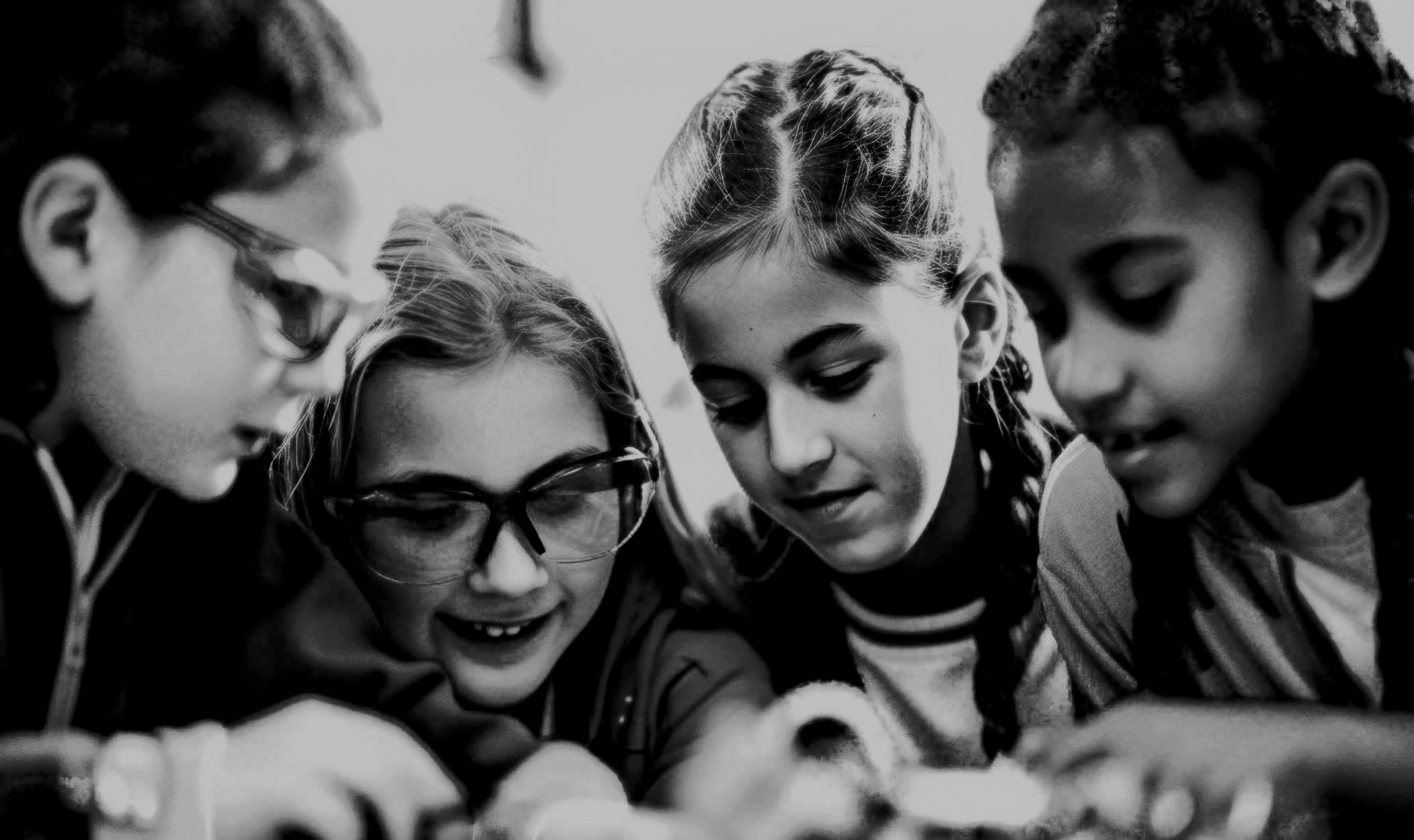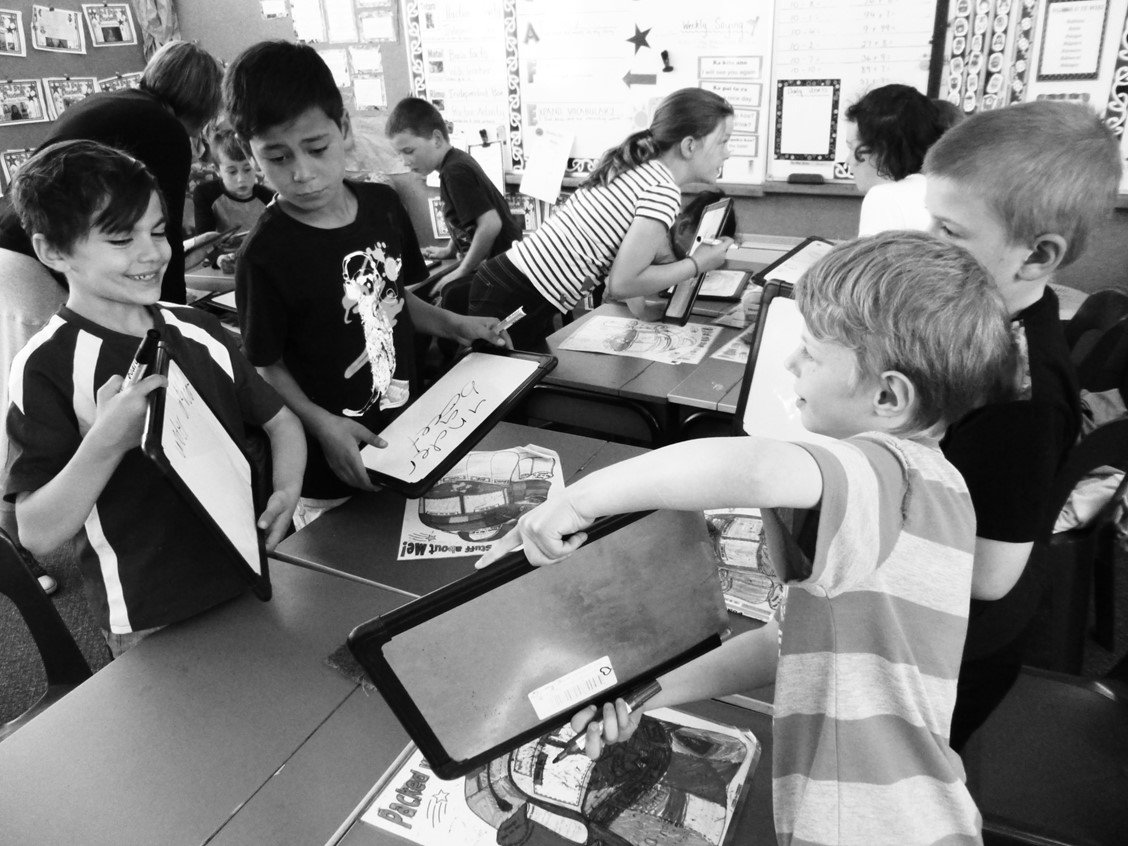
Helping extraordinary teachers
Grow extraordinary people
Nau Mai, Haere Mai
Kia ora koutou!
Welcome to Kagan Professional Development - the home of all things Kagan in New Zealand/Aotearoa.
Unfortunately due to family health issues, we are ‘closed’ until further notice. In effect we are in hiatus, or taking a year’s break.
Feel free to explore our site, but we are unable to answer emails or offer workshops until some time in 2026. Our apologies for any inconvenience and frustration this may cause, because we acknowledge there’s really no replacement for what Kagan can do for schools.
This site will introduce you to Kagan, our top workshops and how to contact us.
Kagan creates high support learning environments and transforms classrooms through high quality teacher and leadership training. Our proven cooperative learning approach creates equitable, inclusive environments where all students actively engage and participate, improving achievement and well-being for all.
Kagan provides practical strategies for:
Relational, dialogic learning through structured student interactions
Oral language and vocabulary development
Social and communication skill building
Developing equitable, safe, and inclusive learning spaces
Strong classroom and behaviour management
What makes Kagan Structures so powerful? They take all the valuable educational research and theory and transform it into clear, practical teaching strategies that actually work in real classrooms.
Watch how easily Kagan transforms from a Teacher PLD session to a junior classroom. Students are learning while also practicing and applying social and communication skills, as well as developing kindness, helpfulness and empathy.

You shared your needs and we listened:
equity, engagement & inclusion; classroom & behaviour management; oral language & vocabulary development
Check out our PLD solutions below….
Kagan Structures for Active Engagement: Ako Mahi Tahi (Cooperative Learning)
-
Kagan Cooperative Learning Structures transform classrooms into inclusive learning environments where all students actively engage and participate, particularly benefiting those who traditionally hesitate to contribute or have diverse learning needs.
These research-supported structures align with the New Zealand Curriculum and create predictable routines that foster participation from all students, not just the typically engaged ones, while naturally reducing behavioral challenges through increased engagement.
The practical, hands-on workshop provides educators with immediately applicable strategies and tools, moving beyond theory to demonstrate how effective teamwork and collaboration can be achieved in real classroom settings.
5 Days in total but can be taken day by day over a period of time.
Win-Win Discipline: A Blueprint to Positive Behaviour Solutions
-
Understanding Student Positions: The framework identifies seven key behavioural positions including attention-seeking, avoiding failure, expressing anger, hopelessness, defying authority, seeking power, and aggressive retaliation - each providing insight into underlying student needs.
Three-Tiered Response System: The approach utilises preventive community-building strategies, in-the-moment solutions that preserve dignity, and follow-up methods that convert behavioural challenges into growth opportunities.
Focus on Core Needs: By recognising students' fundamental needs for connection, competence, and control, educators can develop targeted solutions that benefit the entire learning community while aligning with hauora principles.
Inclusive Environment Creation: When teachers implement position-specific strategies, they foster an atmosphere where both educators and students can thrive together, transforming behavioural challenges into opportunities for mutual growth and understanding.
Dynamic Vocabulary: Basic to Brilliant
-
Active Word Learning: Master unforgettable vocabulary strategies through Kagan Structures that transform traditional practice into engaging, interactive learning experiences.
Cross-Language Benefits: Develop vocabulary acquisition techniques that work effectively for both English and te reo Māori, supporting New Zealand's unique bilingual learning environment.
Comprehensive Skill Development: Build word knowledge through integrated reading, writing, listening, and speaking activities that get students actively using age-appropriate vocabulary.
Inclusive Practice: Learn structures for team conversations and diverse learning activities that support all students while meeting achievement objectives across learning areas.
Practical Implementation: Discover how to seamlessly integrate vocabulary instruction into existing lesson plans using research-based methods that align with local curriculum requirements.
Student Expression: Help learners develop precise communication skills through thoughtful word choice and structured practice opportunities.
Universal Application: Access strategies that impact achievement across all academic subjects while supporting the development of essential academic language skills.
High Support Learning Environments:
The Kagan Approach
At Kagan, we've perfected the art of creating supportive classrooms where every student thrives through structured teamwork.
PIES Principles drive everything we do to ensure full participation and equity
Kagan structures like RallyRobin and strong management tools which transform ordinary classrooms into buzzing hubs of engagement
Every voice matters in our approach—no hiding, no dominating, just balanced participation
Students become support for each other, multiplying helping hands across the classroom
Every voice matters in our approach—no hiding, no dominating, just balanced participation
Students become support for each other, multiplying helping hands across the classroom
Neurodiverse-friendly flexibility built into our structures allows for sensory breaks, modified roles, and multiple ways to contribute
Visual supports and clear routines within our cooperative structures provide the predictability that many neurodiverse students crave (think of it as GPS for the classroom journey!)
Strength-based teaming ensures students with different neurocognitive profiles can showcase their unique talents while receiving support in challenge areas
Our cooperative learning methods create highsupport learning environments where students feel safe to take risks, knowing their teammates have their backs. The result? Higher achievement, stronger social skills, and classrooms where everyone belongs.
“There's nothing so unequal as voluntary participation in a heterogeneous classroom.”
-Dr. Spencer Kagan
The Hidden Paradox of Voluntary Participation
When we make participation voluntary (eg call on one, who can tell me), something interesting happens: confident students jump in while others hold back due to self-doubt, or language or cultural barriers etc.
Over time, this gap widens. The outspoken students build even stronger communication skills while quieter students fall behind.
The real magic happens when we engage everyone equally in a safe, supportive environment—not just our naturally confident learners.
And that's where Kagan structures come in...
Frequently Asked Questions
-
Kagan Cooperative Learning is a teaching approach developed by Dr Spencer Kagan, which is different from traditional cooperative learning. While traditional cooperative learning is usually lesson-based and involves students working together on a specific task or project, Kagan's approach uses a series of repeatable steps called Kagan Structures to promote active engagement and cooperative learning throughout the day.
Kagan Structures are content-free, meaning they can be used with any age group, any curriculum area, and in any context, from early education to adult education. They are designed to be easy to implement, requiring little to no special preparation or materials. Unlike other cooperative learning approaches that may require complex lesson plans or specialised equipment, Kagan Structures can be used as part of any existing lesson, making active engagement and cooperative learning easy for teachers to incorporate into their teaching.
Kagan Cooperative Learning is a holistic, multi-faceted pedagogical approach that aims to make a difference in students' academic and social development. Teachers who have undergone Kagan training use the term "Kagan" as an all-encompassing term to describe the many components and benefits of the approach.
-
To ensure students have the skills to work with others, and the will to do so, Kagan has specific structures and strategies that create a safe, caring, culturally responsive and cooperative learning environment to ensure all students are able and willing to engage in these structures.
Teambuilding and Classbuilding occurs regularly, constantly helping students seeing past the exterior and to the person inside.
Social and communication skills are built into every structure, which means they are learning and applying them at the same time - it’s like magic!
-
When students are engaged, they pay attention, they're motivated, they learn more, and the learning sticks. The biggest difference between the Kagan approach and teaching using ‘traditional’ methods is the ability to engage every student. Traditional classroom teaching captures the minds and attention of some students, but not all. Good teachers engage more students. But even the best teachers who use traditional instruction don't require every student to participate. With traditional instruction, there is always a subset of students who fall through the cracks. We're all too familiar with the results: a widening gap between high achievers and low achievers.
When students are actively engaged on a daily basis, everything changes. Engagement is the key! Engagement is the reason why veteran teachers who turn to Kagan Structures experience their greatest success ever.
Engagement is why low-performing and priority students who’s teachers use Kagan Structures outperform their peers who’s teachers don't.
Engagement is why students report they like school more, their teachers more, the academic content more, and feel better about themselves, and are less disruptive.
Engagement is the reason why principals of failing schools can turn schools around, quickly. Active student engagement gets straight to the root of the problem in many classrooms.
-
When you are using a Kagan Structure you know how many students are engaged at any one time, because we have structured the interaction.
When you look at photos of a structure, you can see the engagement taking place.
Without Kagan, unstructured interaction, its a bit of a guess as to how many are involved and participating. And we know which students will be opting out.
-
Kagan Structures close the achievement gap by creating dramatic gains for struggling students. Now they can no longer ‘hide’, but are supported to participate through the structure, and through sitting in carefully selected learning teams.
But the gains are not bRought at the expense of high achievers; they too are engaged in a richer, more interactive learning environment. As brain-research is proving, meaningful engagement is just a better way to reach and teach all students.
Students need to work/talk at least as hard/often as the teacher. The more they interact with their peers and with the curriculum, the more they'll learn.
Kagan Structures require every student to participate frequently and approximately equally. Many of our priority learners contribute very little in the normal classroom.
-
We know that as soon as you have students interacting with other, you need really strong classroom management.
Kagan micro-manages movement and interactions, so even new teachers can use structures. In fact, feedback from new teachers is that Kagan made a huge difference to their classroom and behaviour management. When students are engaged, moving, and ‘allowed’ to talk to others, many of your behaviour issues will disappear.
We are so confident of this, that we like to model a structure or two for teachers while they watch their ‘difficult clients’.
-
Kagan Cooperative Learning structures provide significant benefits for neurodivergent learners through their structured approach to classroom interaction and engagement. Here's how they support diverse learning needs:
Clear Structure and Predictability Kagan structures offer consistent routines with explicit steps, reducing anxiety for learners who benefit from predictability. The defined roles and turn-taking protocols create a safe framework for participation.
Multiple Access Points By incorporating various modalities (visual, auditory, kinesthetic), Kagan structures accommodate different processing styles. This multimodal approach helps neurodivergent students engage with content in ways that match their strengths.
Managed Social Interaction For students who find unstructured social situations challenging, Kagan provides scaffolded interaction opportunities with clear expectations. The structured nature of these interactions reduces social anxiety while building social skills.
Built-in Processing Time Many structures incorporate think time and partner discussions before whole-group sharing, benefiting those who need additional processing time before responding.
Movement Integration Structures that incorporate movement help students who need physical activity to maintain focus and regulate their sensory systems.
Strength-Based Participation The variety of roles within Kagan structures allows students to contribute using their unique strengths while developing skills in areas of challenge.
-
Kagan Cooperative Learning serves as a powerful implementation framework that enhances the delivery and effectiveness of various educational programmes across New Zealand schools in several key ways:
Creates Ready-Made Implementation Pathways
Kagan provides educators with concrete, actionable methods to implement abstract programme goals. Rather than just understanding the "what" of an educational initiative, teachers gain clear "how-to" strategies that bridge the gap between programme theory and classroom practice.
Increases Student Engagement
By incorporating Kagan's principles of simultaneous interaction and equal participation, programmes that might otherwise rely on traditional teaching methods see dramatically increased student engagement. This heightened engagement leads to better programme outcomes regardless of content area.
Builds Consistent Implementation Language
Kagan establishes a common vocabulary and consistent approach across classrooms and year levels, ensuring that educational programmes maintain fidelity during implementation. This consistency allows programmes to be delivered as intended throughout a school.
Enhances Professional Learning Communities
When teachers implement programmes using Kagan structures, they develop shared practices that facilitate meaningful collaboration. This strengthens professional learning communities and creates natural opportunities for teachers to refine programme delivery together.
Supports Differentiation Within Programmes
Kagan structures allow programmes to be naturally differentiated for diverse learners. This flexibility ensures that programmes can be implemented inclusively while maintaining their core objectives, better serving New Zealand's diverse student population.
Creates Sustainable Implementation
Programme implementation often falters when initial enthusiasm wanes. Kagan structures, once learned, become part of a teacher's permanent repertoire, ensuring that the delivery methods for educational programmes remain sustainable long-term.
Facilitates Culturally Responsive Implementation
Kagan's emphasis on equitable participation and positive interdependence naturally aligns with culturally responsive practices important in New Zealand education, ensuring programmes are delivered in ways that honor diverse cultural backgrounds.
By functioning as an implementation methodology rather than a competing programme, Kagan strengthens rather than replaces existing initiatives, improving outcomes across New Zealand's educational landscape.
-
Great question!
The answer: Most teachers think they are, but they lack the practical tools they need to make high levels of student engagement a daily reality. By no fault of their own, teachers learned traditional methods, and are teaching as they were taught. Many are simply unaware of an easier and more effective approach.
The power of Kagan Structures is that they distil the best of educational theory and research into very specific, easy-to-use teaching strategies. Mediocre teachers become good. Good teachers become great. And great teachers—well, they're already using Kagan Structures!
We like to say Kagan is powerful teaching, made simple.
-
Yes, due to our structures being content-free, Kagan can be used with any age group from 4-80 year olds, in any context, and in any curriculum area. This is one of the biggest advantages of Kagan, as it is true across-school and region PLD.
Once you learn Kagan Structures, you can use them for life - no matter what educational context. Or business context!
-
Over the past decades, Dr. Kagan and his team have developed, perfected, and shared with the world over 200 Kagan Structures. Dr. Kagan's book, Kagan Cooperative Learning, is the single most comprehensive and most popular book in the field of cooperative learning and is considered the must-have guide for active engagement strategies.
Kagan NZ prefers that this book is purchased when you attend your first workshop, because we have found that you really need to experience Kagan for yourself in order to successfully implement it in a classroom. Teachers have commented to us that they didn’t really get it until they had trained.
Our workshops are highly interactive and situational, and model exactly what we want to see in classrooms. Once you have mastered cooperative learning, then yes, you can easily learn new structures and strategies from a book.
-
Cooperative learning is our foundational workshop, so we would always encourage you to start there. This can be run as a whole school workshop, ie TOD, or with a group of teachers, across a Kahui Ako, or you can attend an open workshop.
It’s best that we meet and discuss whether Kagan is right for you, as often schools have a lot of PLD going on, (to be honest Kagan will replace many of them), and we have found it’s best to wait until the following year when we can be the main focus for the school.
We offer a wide range of professional development, covering cooperative learning, behaviour, leadership, literacy, maths, science, social science, growth mindset, and SEL, all delivered using Kagan Structures.
Throughout our site we use photos to show students and teachers and using Kagan Structures.
-
We believe anyone who chooses teaching as their career iis already extraordinary, and we want to help them in turn grow extraordinary people.
Kagan's structures empower teachers with proven frameworks that maximise student engagement and collaboration. By implementing these structured cooperative learning approaches, teachers create learning environments where every student actively participates, develops social skills alongside academic ones, and builds positive interdependence. This holistic development helps transform students into well-rounded individuals prepared for future success - extraordinary people shaped by extraordinary teaching.






